Traditional Finnish Ryijy Rugs
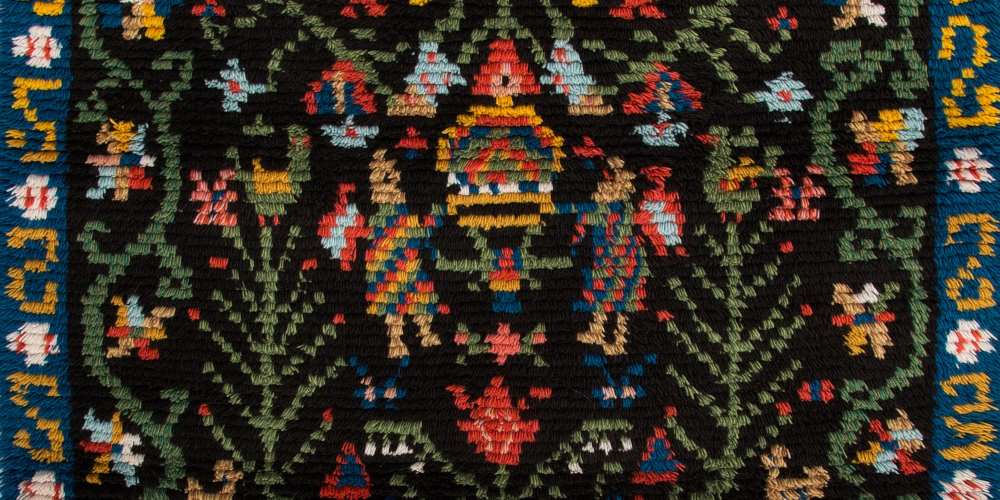
Traditional finnish Ryijy rugs have been made since the Viking era, when they were used as boat covers and shrouds. In Finland, they were typically used as blankets and warmers, not so much on the floor like Oriental rugs.
Ryijy is a long-pile woolen cover, which nowadays is mainly hung on walls as a decoration. Ryijys from the 1500s had long piles and were either monochromatic or modestly patterned with the natural colors of wool yarn. The pile was kept facing down.
In the 1700s, quilts started to be used in beds, and ryijys were used in celebrations and as decorations. Ryijys also began to be lavishly decorated. The pile was cut shorter so that the patterns would be more distinct. Different regions developed typical designs, which were made, for example, as trousseaus or family bridal ryijys. Therefore, dates, human figures, and heart patterns became popular.
At the end of the 1800s, National Romanticism brought ryijys to new prominence, and well-known artists like Akseli Gallen-Kallela and Louis Sparre began designing art ryijys. The Art Nouveau-style “Flame” ryijy designed by Gallen-Kallela for the 1900 Paris Exposition is perhaps the first art ryijy free from traditional designs.
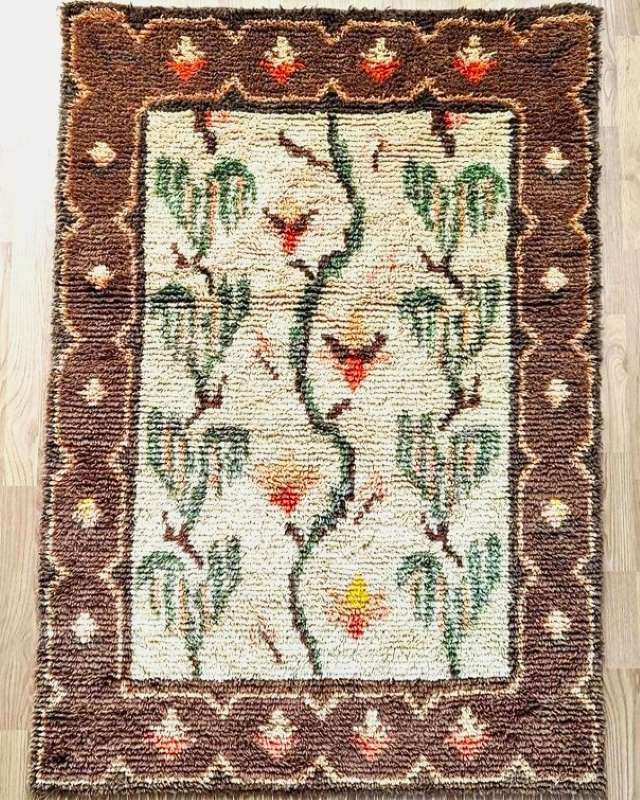

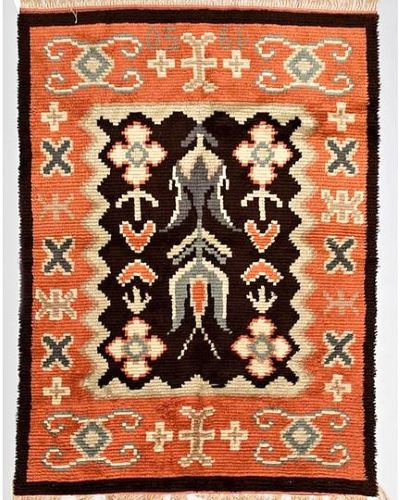
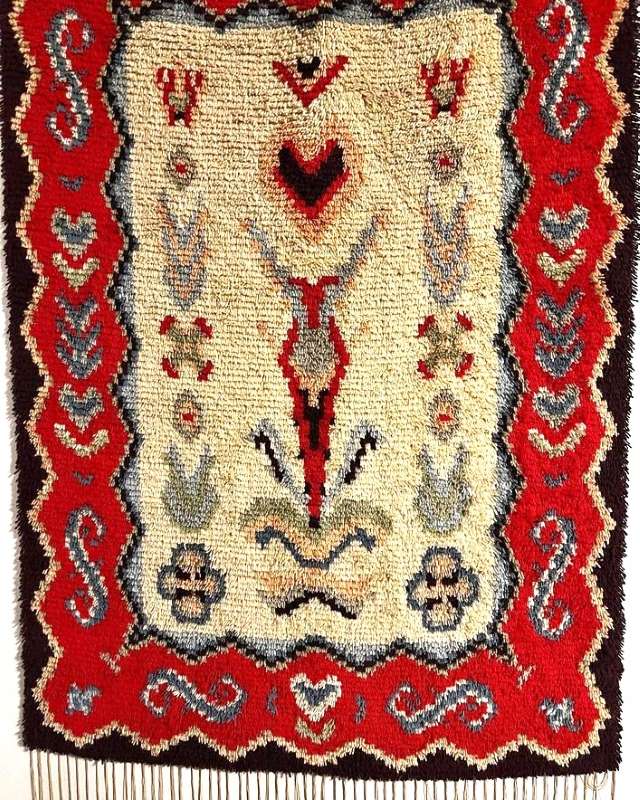
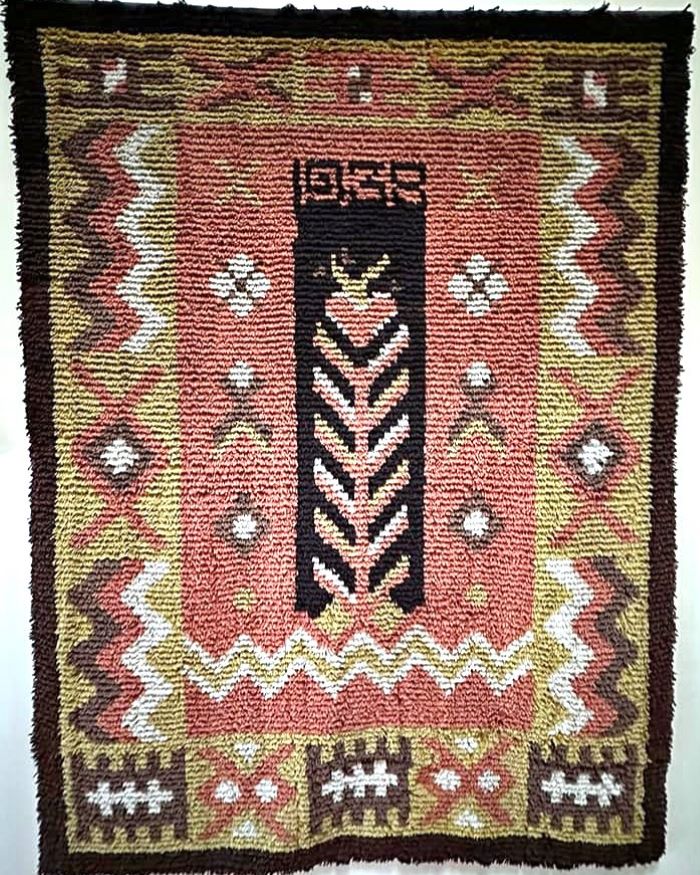
What does “ryijy” mean?
The Finnish word “ryijy” is derived from the Early Swedish word “ryia” (modern Swedish “rya”). It comes from the Old Norse word “ry” or “ru,” which means tangled and coarse. A ryijy is an ancient Nordic woolen cover made from the wool of their own dense and long-fleeced sheep. It was crafted using knotting techniques to create a textile resembling animal fur, making it very warm.
How much do ryijys cost?
Auction houses can provide some sort of valuation, at least if the ryijy is intended to be sold through them. Companies that sell supplies and ryijys do not provide price estimates but may share some information about the ryijy. Antique dealers might also be able to help.
One way to determine the price is to look at the selling prices of similar ryijys previously sold on auction websites or in auctions. It’s important to look at the actual sale prices rather than the starting prices. Asking prices can sometimes be quite unreasonable when the seller believes their ryijy is valuable.
In Finland, ryijy models like “Metsässä palaa” and “Porin tienoot” are very common. How valuable are these types of ryijys?
The value of a “Metsässä palaa” ryijy depends on where it was made. If it was made by the Friends of Finnish Handicrafts, the price can be ten times higher compared to those made from DIY ryijy kits. Such a ryijy could be obtained for a couple of hundred euros.
A “Porin tienoot” ryijy can be acquired for under a hundred euros. Some models were mass-produced in the past and are continuously available for sale, so their prices are not very high. The “Pirkka-ryijy” has also been on the walls of many homes.

“Porin tienoot” ryijy
What makes a ryijy valuable?
Many factors affect the value of a ryijy. Sentimental value cannot be priced, but many other aspects can be. The value is influenced by the ryijy’s size and condition. Are the piles in good shape, are the threads unraveling, have the colors faded? Is the ryijy clean, has it been repaired, does it have insect damage? Is the edge frayed or stretched due to poor hanging?
Of course, the age of the ryijy also affects its price. Folk ryijys are rare and therefore their price is high. The beauty of the ryijy also increases its price, although beauty is somewhat subjective! Patterned ryijys are generally more valuable than those with geometric designs. The quality of craftsmanship also matters. On the other hand, folk ryijys often have small flaws, but these are charming and do not affect their valuation.
The appreciation of newer ryijys is influenced by the designer and their reputation.
Where the ryijy was made significantly affects the price of art ryijys. Was it made by the artist themselves, finished in a respected weaving studio, or did someone make it using a ready-made kit? This is particularly relevant for ryijys with intricate instructions, where the color was intended to gradually change from one area to another. These are difficult to weave and usually not successfully done by amateurs.
The condition of new ryijys is affected by whether they have been washed or not. Often, washing can ruin the piles, making the tips sharp. It is not advisable to wash modern long-pile ryijys yourself.
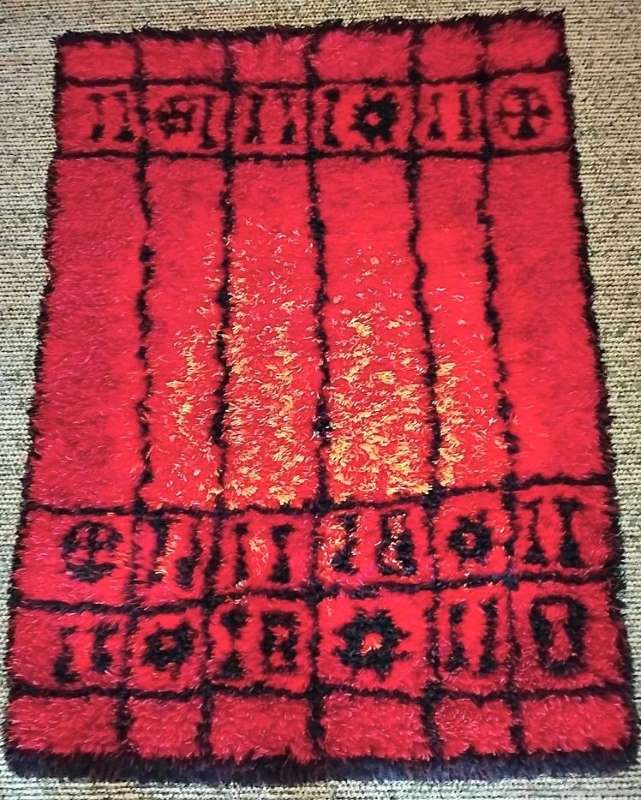
How to recognize an old and valuable ryijy?
Recognizing a truly old ryijy requires some experience. The year indicated does not mean much, as many old ryijys have been copied. If the ryijy has fringes, it is a copy of an old ryijy regardless of the year on it.
Old ryijys have linen or hemp thread as the warp, not fishing line. The piles are usually worn and the thread twists partially undone. However, in the best ryijys, the piles are well-preserved. If the ryijy consists of two strips or has pile on both sides, it is not a copy.
The most valuable ryijys are from the 1700s if everything else is in place. Those made in the early 1800s are also highly valued.
How to store a ryijy?
A ryijy should be stored away from light, at the same temperature and humidity levels comfortable for the house’s occupants. It is best to roll it with the pile direction, around a cardboard tube, with the pile side facing out. A clean sheet will protect the rolled ryijy from getting dirty.
How to hang a ryijy on the wall?
A ryijy should be hung on the wall so that the weight is distributed evenly and it doesn’t sag in the middle, for example. The hanging should be checked periodically. The hanging of old ryijys needs to be supported by sewing support pieces and hanging channels to the back of the ryijy to prevent tearing.
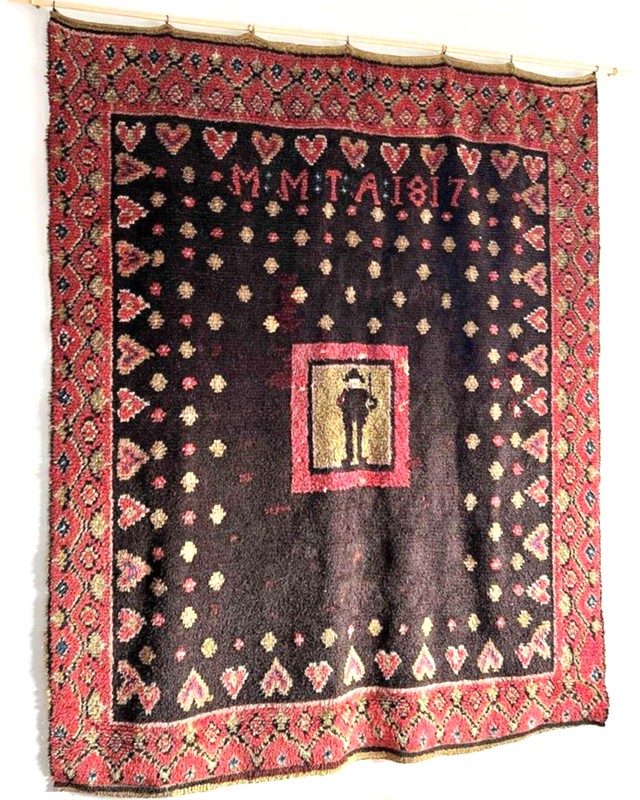
What yarn was traditionally used to make ryijy?
It is best to use threads and fabrics intended specifically for ryijy materials. A wool base woven on genuine linen warp increases the value of the ryijy. Ryijy thread is specially designed for ryijy sewing and, due to its suitable twist and coarse surface, it also withstands the use in a ryijy. With poor-quality thread, the pile tips will start to unravel.
Can you wash a ryijy?
Ryijys or raanus are usually cleaned through dry cleaning. Dry cleaning avoids the harmful effects of water washing, such as shrinking and matting. We recommend purchasing a protective treatment. The protective treatment extends the textile’s life and the interval between cleanings.
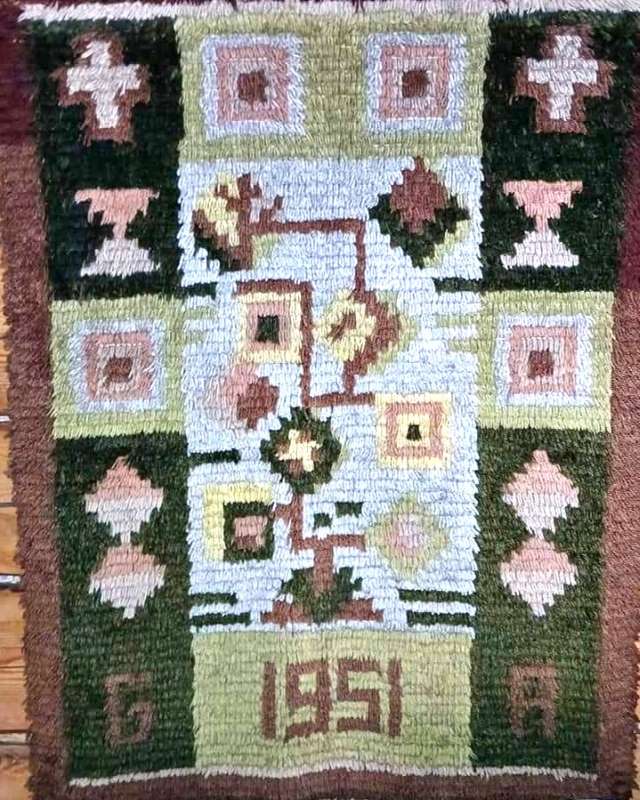
Ryijy Rugs: An Overview
Origin and History:
- Ryijy rugs are a traditional Finnish textile art form, originating from the 9th century.
- The term “ryijy” comes from the Old Norse word “ru,” meaning coarse or shaggy.
- Originally, ryijy rugs were used as functional items, such as bed covers and warmers in boats and homes. They were especially common in the cold Nordic climates.
- During the 18th and 19th centuries, ryijys evolved from practical items to decorative art pieces, often used in ceremonies and as symbols of status.
Design and Craftsmanship:
- Ryijy rugs are known for their long pile and intricate designs.
- Traditional ryijys feature geometric patterns or floral motifs, with some including symbolic elements such as hearts, human figures, and dates.
- The creation of a ryijy involves a technique called knotted pile weaving, similar to that used in Persian rugs but with a distinct Nordic style.
- The wool used is typically from local sheep, which adds to the authenticity and cultural significance of the ryijy.
Cultural Significance:
- Ryijys are considered a significant part of Finnish cultural heritage.
- They often carry personal and familial significance, with designs passed down through generations or created for specific events, such as weddings.
- In the late 19th and early 20th centuries, the Finnish National Romantic movement revived interest in ryijy rugs, with artists like Akseli Gallen-Kallela contributing to their design and popularity.
Modern Usage:
- Today, ryijy rugs are valued both as historical artifacts and contemporary art pieces.
- They are displayed in museums, used in interior design, and appreciated by collectors around the world.
- Modern ryijy rugs may blend traditional techniques with contemporary designs, reflecting Finland’s cultural heritage while embracing modern aesthetics.
Key Points to Remember
- Ryijy rugs are an integral part of Finnish cultural heritage with a history spanning over a millennium.
- They evolved from practical items to decorative pieces and symbols of status and tradition.
- The craft of making ryijy rugs involves a unique knotted pile weaving technique and often uses local wool.
- They remain popular today, both as historical artifacts and modern decorative pieces.